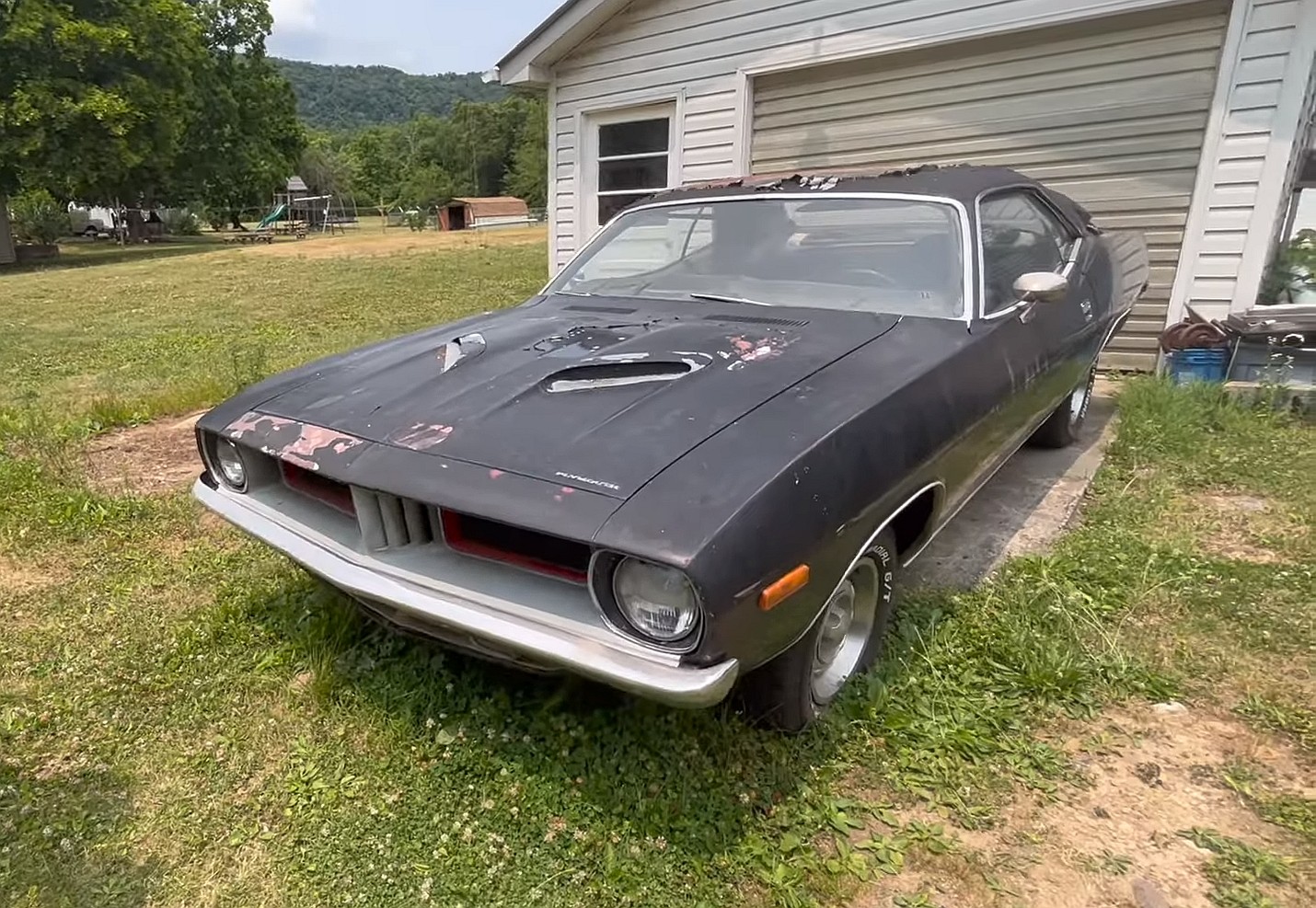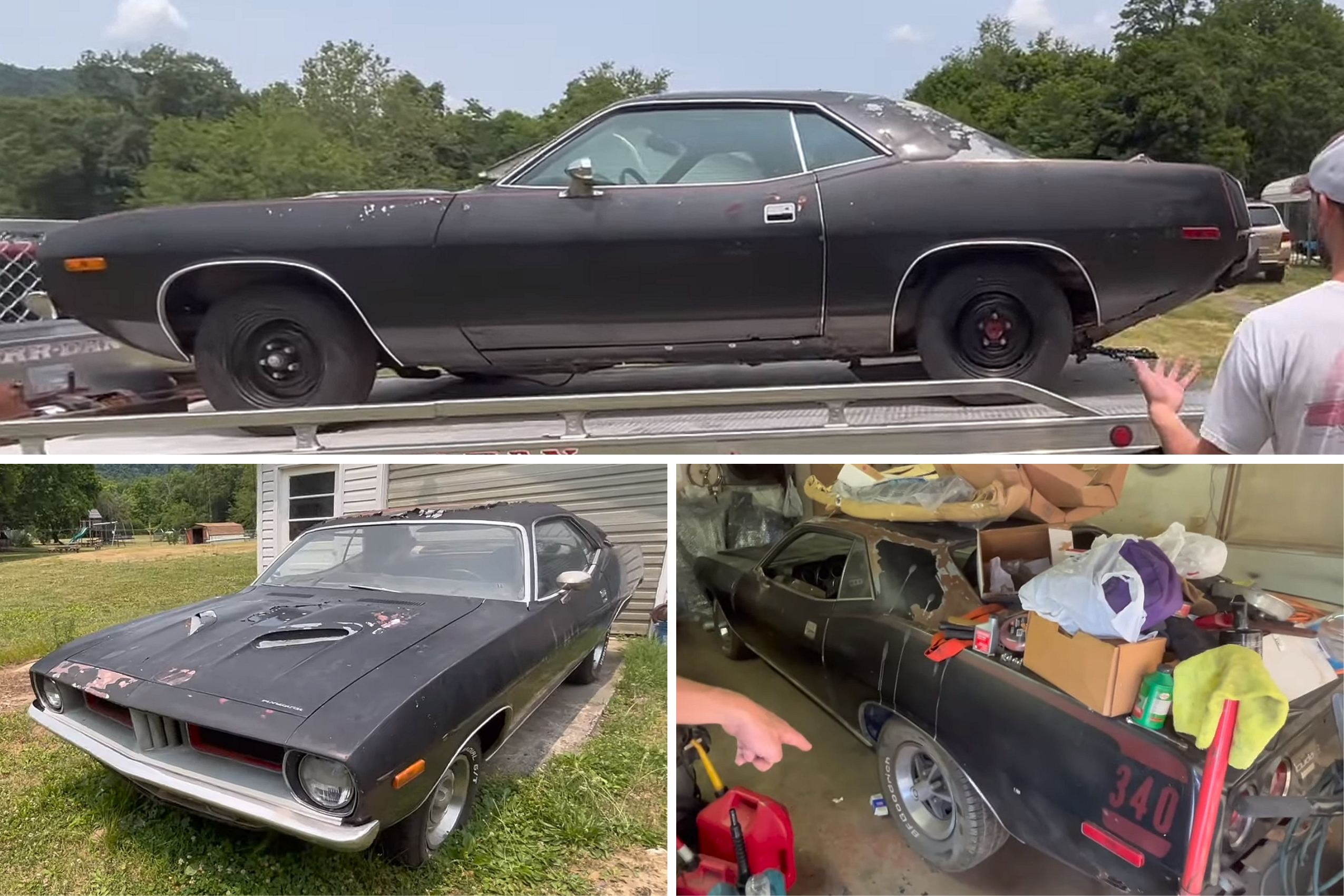The story of the Plymouth Barracuda began in 1964 when the pony car made its US debut a couple of weeks before the iconic Ford Mustang. But to many muscle car enthusiasts, however, the Barracuda tale didn’t become interesting until 1969. That’s when Chrysler introduced the third-generation model.
What makes the latter so special? Well, Plymouth gave the third-gen car a more aggressive appearance and dropped its hottest big-block V8 engines under the hood. In other words, the third-gen redesign turned the Barracuda into a full-blown muscle car. And not surprisingly, die-hard collectors are chasing the 440- and 426-cubic-inch (7.2- and 7.0-liter) cars nowadays.
The former came in two guises. Plymouth offered a four-barrel variant with 375 horsepower and a “Six-Pack” version good for 390 horses. The 426 HEMI topped the range with 425 horsepower on tap. These Barracudas are also rare. Not only because they weren’t very popular back in the day due to high insurance costs but also because both engines were discontinued after only two years.

In 1970, Plymouth moved only 986 cars with the 440 four-barrel, 1,784 units with the 440 six-barrel, and 666 HEMIs. In 1971, the 440 four-barrel was discontinued, while the six-barrel version found only 254 customers. HEMI sales dropped to just 114 units that year.
Third-gen Barracuda production continued until 1974 without big-block engines. This means that 1972-to-1974 examples aren’t as desirable on the classic car market. But some of them are hard to find due to low production numbers. Specifically, Plymouth sold 49,505 cars from 1972 to 1974, less than 1,000 more than in 1970 alone. As a result, production figures will be low regardless of the engine/transmission combo. And it will get even lower when we factor in other options and even colors.
Concerning paints, triple-black ‘Cudas from the era are difficult to find. There’s no production breakdown based on colors, but you just don’t see them out there nowadays. And the examples that pop up occasionally are usually in poor shape due to prolonged storage. Like this trio of 1972-1973 cars discovered by YouTube’s “Backyard Barn Finds.”
Located somewhere in the hills of Pennsylvania, these ‘Cudas spent decades off the road. And as it usually happens with classics that have been parked for a very long time, they need a lot of work to run and drive again. But even so, they’re worth saving as rare iterations of Plymouth’s most iconic nameplate.

The video begins with a 1973 example still sporting its factory TX9 color. It also has a red pinstripe, a tiny detail that makes it even rarer. Sitting since 1994, it’s pretty rusty underneath, but it still rocks an original interior with black upholstery. The 340-cubic-inch (5.6-liter) V8 engine also appears to be a numbers-matching unit. It seems to be a manual car, which makes it one of 4,163 sold that year in this configuration.
The next one is a 1973 version that’s actually an authentic triple-black model. That’s because it also has a black vinyl top in addition to the TX9 paint and black interior. This one comes with a better frame, but the dash has been upgraded at some point. The hood is stuck, and we don’t get info on the engine, but it’s also rare due to the automatic gearbox. Overall, Plymouth sold 6,408 such cars in 1973, regardless of the engine. A 318-cubic-inch (5.2-liter) V8 would make it much rare, though, at 1,832 examples.
The third ‘Cuda is also a black car with original TX9 paint. There’s some uncertainty about the red hockey stripe and the magnum wheels, but it sports an all-original interior with a Rallye dash and a pistol-grip shifter. It also has the nicest cabin of the three. The 340-cubic-inch engine might not be original, but the engine bay is surprisingly clean. The 340/manual combo makes it one of more than 4,000 cars built but the triple-black layout and the pistol-grip shifter likely decrease that number to less than 300.
All told, these ‘Cudas are surprisingly original, given how much time they spent off the road. Cars like these usually get dismantled or sent to the junkyard. And needless to say, at least two of them are worth restoring.
